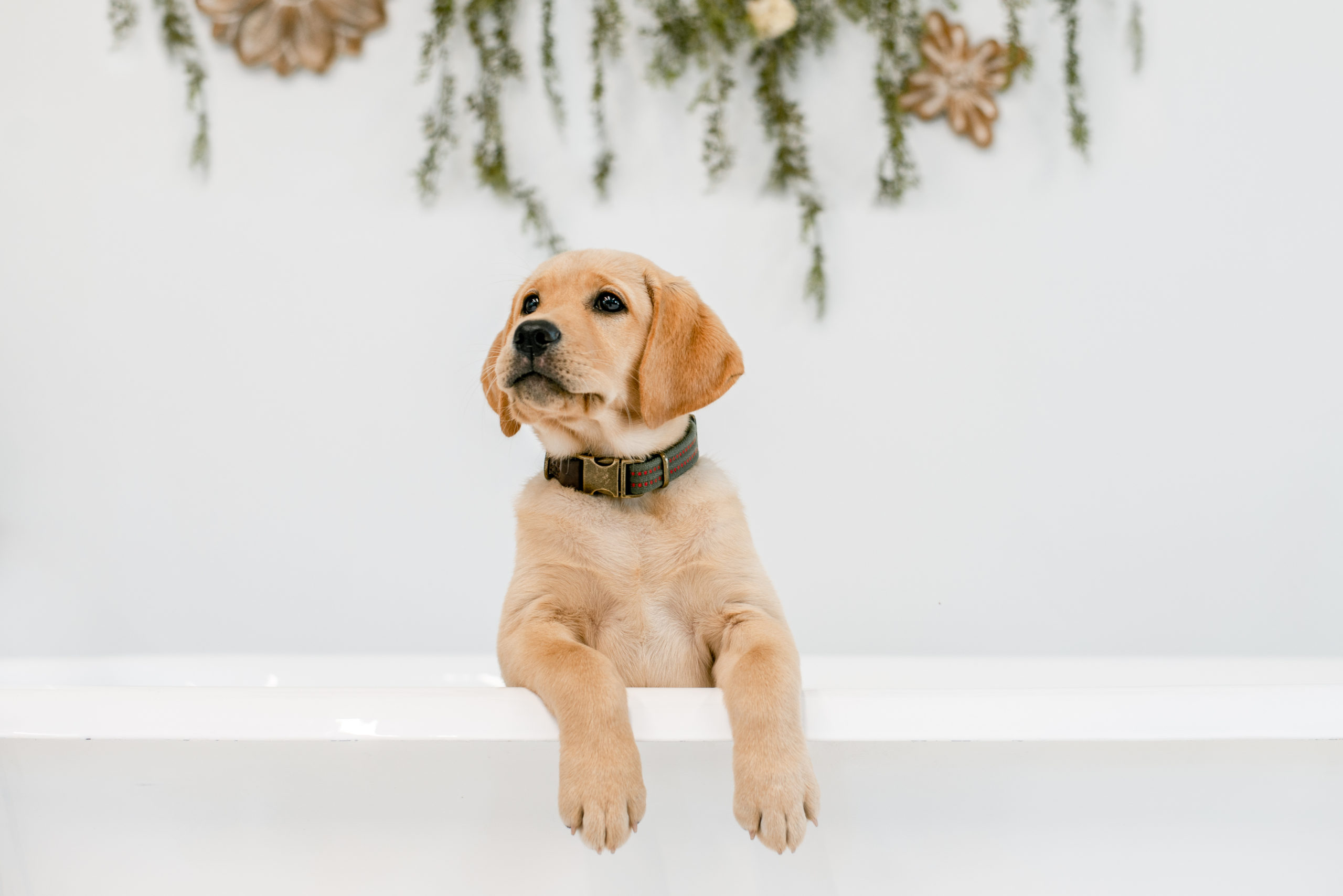Separation anxiety is something we as dog owners try our best to avoid in our canine companions. Though we can do many things to be proactive and try to avoid this, there are times when young puppies exhibit this behavior when we first bring them home. When figuring out if our new puppy has separation anxiety or not, we want to be observant of a few key behaviors that exhibit extreme distress when left alone including; excessive barking, whining, attempting to get out of containment, being destructive and having potty accidents. But, why do some puppies exhibit this behavior when others don’t?
If a puppy has been taken from its mother and littermates too soon, they can lack the social skills and confidence to know how to handle being by themselves. From the beginning when a puppy is born, they are with their mother and littermates until they move on with their new family. In another article, we reference the ideal time for puppies to leave their mom – which is approximately 8-10 weeks old. When getting a puppy from a reputable breeder, the puppies should be socially ready to leave their mom at that timeline. But if we adopt a puppy from a rescue, we don’t always know the puppy’s history. So, what steps can we take to be proactive when we bring a new puppy home to try and avoid separation anxiety?
Step 1: utilize a crate. Crate training is critical in many different aspects of training for a new puppy. Dogs are natural den animals and often prefer an area to call their own to relax. When starting on crate training, you’ll want to try your best to create a safe space for your new puppy by including a blanket or bed, a toy that isn’t ingestible and a puppy teething item for them to chew on. You may even try covering the crate with a large blanket to create a dark space for your puppy to relax a little bit easier. If your new puppy cries immediately when you are working on crate training, try to not get them out of their crate when you first hear them crying. New puppies will quickly recognize that their cry gets them out of the crate and then we have to ask ourselves “who’s training whom?” To set up positive experiences in the crate with your puppy, you can put them in the crate right after a tiring play session for their nap times. Often a puppy’s cry in the crate isn’t due to distress, rather that puppy having a lot of energy and being placed in a small area. A very scientific term we call “puppy in a box.” We often expect our new puppy to go into its crate at any given time and be content right away – which won’t always happen due to our new bundle of joy having a lot of energy! By tiring out your puppy before working on crate training, you are setting your puppy up for success!
Step 2: create a routine. A routine is critical in many different aspects of training for a new puppy. A good routine for a young puppy might look similar to: wake up, go potty, play, eat and drink, sleep – repeat. A routine also helps with potty training as well! By creating a routine, you develop expectations for your new puppy around your daily activities. As time goes on, your new puppy may even pick up on your habits and go into the crate on its own during certain times of the day!
Step 3: have time away from each other. It is crucial to have time away from your new puppy so that they don’t always expect you to be around and develop an unhealthy codependency with you. Even if you work from home, we suggest that all dogs have crate time away from their owners so that they are used to being alone if there should ever be a time it’s needed. It is also suggested that puppies sleep in their crate at night rather than in bed with their new owners. This is something that also helps with potty training!
Step 4: start obedience training! This can be a great way to develop a relationship with your new puppy while also giving them a mental job. When we give our dogs a mental job, they become tired and don’t have as much energy to devote to their anxiety levels when left alone or when in a crate. This is a great way to be proactive and set your puppy up for success. When focusing on obedience, we train for the five main points being; heel, sit, down, stay and come. As these commands become easier for your puppy in a low-distraction environment, you can apply the four quadrants of learning to their training sessions being; distance, distraction, duration and location.
While we are keeping in mind the proactive approaches we can take to crate training to hopefully avoid separation anxiety, we also want to remember that there are a few breeds of dogs that are more likely to exhibit symptoms of separation anxiety at an early age due to breed specific characteristics. Often, those breeds are the very high energy and working dog breeds! Researching the right dog personality traits and energy level for you and your family is very important to know the physical activity level needed to set your new puppy up for success!



